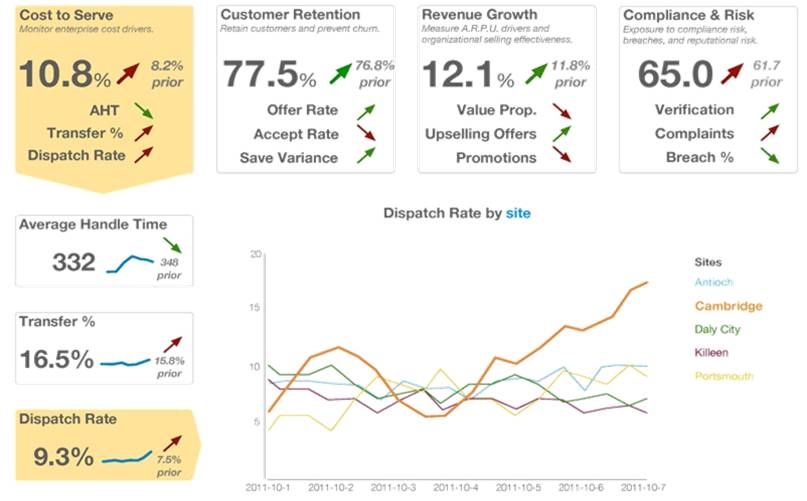
Interaction Analytics is a game changer for customer service leaders. Why?
Because a lack of credible insight into which issues currently matter to customers leaves management decision making on the back foot.
However, when done in the right way, Interaction Analytics transforms your ability to reduce service failures, increase customer satisfaction and optimise advisor performance.
That’s a bold statement. So let me explain in a little more detail, what Interaction Analytics can do and its value to you.
But before doing that, I want to sort out any confusion over naming conventions. Throughout this post I refer to ‘Interaction Analytics’. You might have labelled it as ‘Speech Analytics’ or even ‘Voice Analytics’.
Here is an equivalent precedent.
We changed the language from ‘call centres’ to ‘contact centres’ in recognition we now provide multi-channel customer service. In the same way, ‘Speech Analytics’ evolves to ‘Interaction Analytics’. This reflect the need to understand all forms of voice and text interactions. These days that includes email, web chat and social channels. So Speech Analytics is part of an overall Interaction Analytics capability.
Why Customer Service Decision Making Is Often Guesswork
Ask the majority of contact centre leaders about their objectives. No doubt, the themes of reducing cost and improving customer experience will be most common. They will also tell you it’s a tough combination to get right. Making progress in one area can often be at the other’s expense.
So why has it been so difficult to manage this balance? Between the needs of the business and those of the customer.
One of the core reasons lies in the quality of our decision making process. Operational decisions need to be based on quality insight that is timely and trusted. Yet we often end up measuring what we can rather than what we need. Thus we rely on reports that tell us about the volume and timestamp of customer interactions but not their cause.
What are the implications of this?
We can only partially achieve those core objectives. We are blindsided if all we know is the volume of customer interaction but next to nothing about why they made contact. Knowing why facilitates informed decisions on both cost and satisfaction.
The same applies to advisor performance. Traditional metrics only track activity such as numbers of interactions and their duration. But team leaders need insight into the quality of the outcome to make useful coaching interventions. They also need to prioritise their limited time by knowing they are tackling priority issues.
But again how do they do that? Manually sampling interactions is time consuming and basically random in its ability to uncover what matters. And as any team leader will tell you, call disposition codes have very limited value in terms of optimising an advisor’s performance.
What does this all add up to?
Even the most capable customer service leadership team is destined to make more mistakes and miss more opportunity when confined to traditional sources of reporting and insight. These are simply not up to the job of informing what is going on beyond a simple tally of activity, often time delayed and historic.
And I won’t mention the still prevalent use of spreadsheets in contact centres and the time spent merging siloed data to provide basic operational navigation.
How Interaction Analytics Turns On The Headlights
The overwhelming point about any traditional contact centre budget is that 70%+ is consumed by headcount. Thus the way to reduce operating costs is to get a grip on the root causes around why interactions happen. Once that is known you can phase out those that are unnecessary and enable self serve when live intervention is overkill. A great start to optimising costs.
To be effective though requires a laser focus from the leadership team on continuously transforming the core dynamics of why customers need to interact and how well they are then serviced.
Of course these are not new ambitions. But what does change with Interaction Analytics is the ability to “chunk up” and “chunk down” across the huge volumes of interaction Customer Service operations generate.
This is the ability to seamlessly move from context and overview down into the detail. In complex markets such as omni-channel retail, this ability to track the customer in real-time is even more important.
Only then can you generate accurate, up to date insights into the latest service experiences that matter for your customers.




